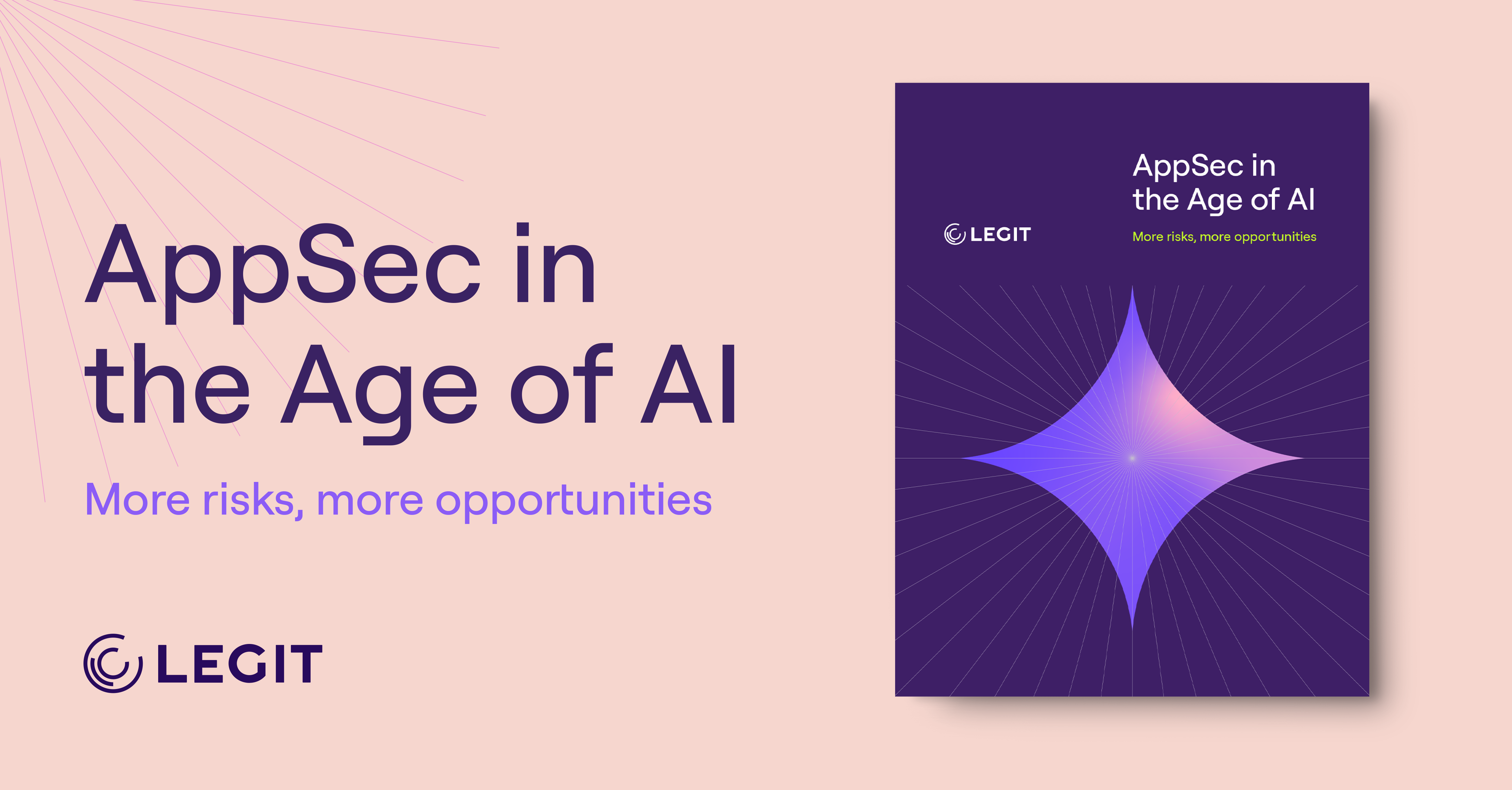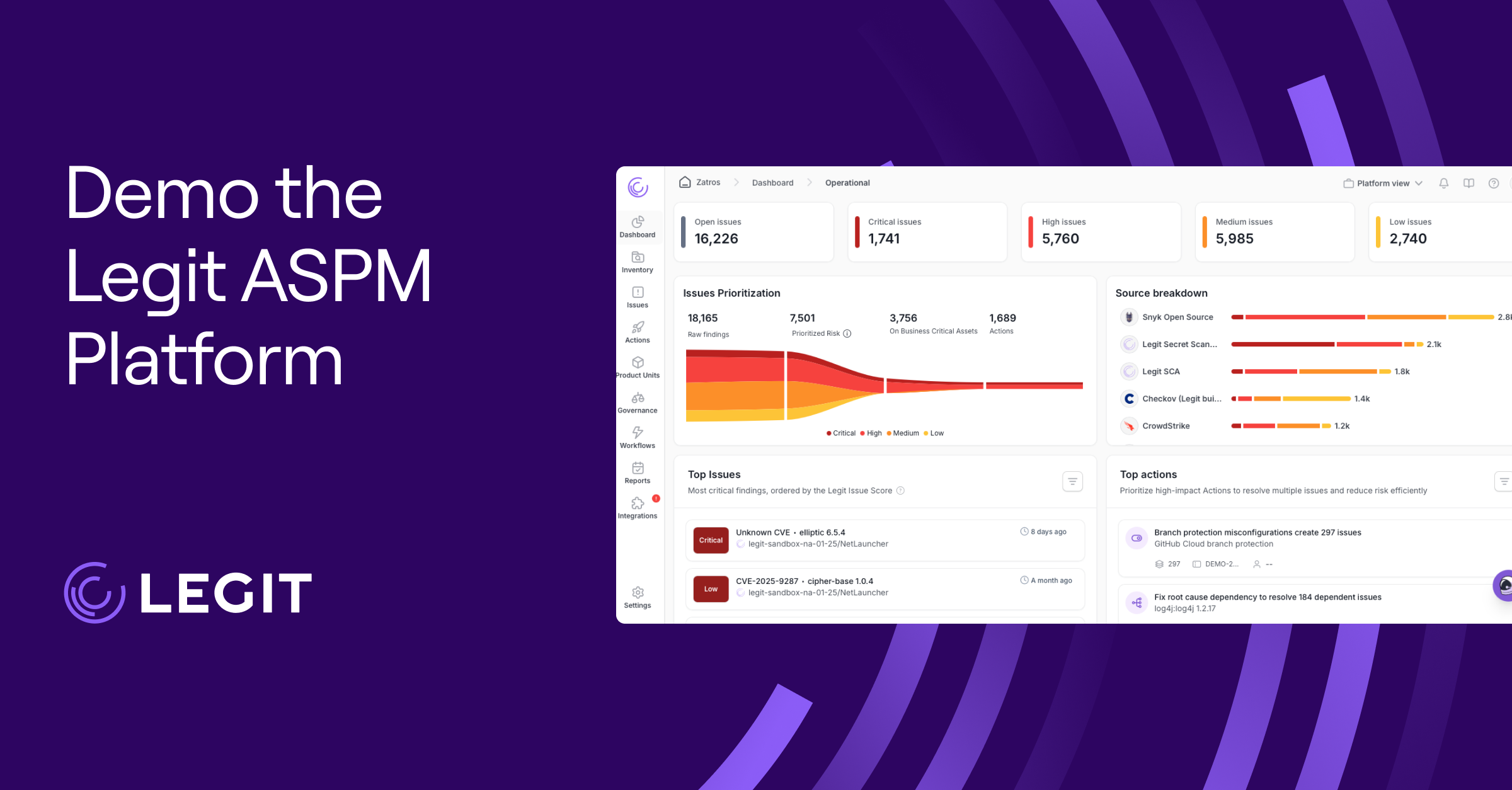Governance, risk, and compliance (GRC) platforms are foundational for organizations that need to manage risk, meet regulatory demands, and strengthen their security posture without slowing development. This software brings structure and clarity, helping teams do everything in one place.
With security threats evolving and compliance requirements piling up, GRC software's role has shifted from a back-office tool to a strategic advantage. Whether navigating frameworks or trying to align teams around a shared security model, GRC platforms offer a practical way to turn complex obligations into manageable workflows.
What Is a Governance, Risk, and Compliance Tool?
A GRC tool is software designed to help organizations manage governance, risk, and compliance activities together. Instead of juggling spreadsheets, emails, and siloed tools, teams use GRC platforms to centralize risk assessments and track compliance efforts across the business.
GRC software solutions connect risk to business strategy. They enable security, legal, and operational teams to collaborate more effectively by aligning risks to controls and tracking real-time progress. This reduces duplication and gives leaders better visibility into how risk and compliance impact decision-making.
Benefits of Using Governance, Risk, and Compliance Software
Modern GRC platforms make your organization faster and more resilient. Here’s how:
- Centralized visibility and smarter decisions: GRC software unifies your risk, compliance, and governance data into one platform, giving you a complete view of what’s happening across the business. This lets you prioritize what matters most and act with confidence.
- Fewer manual tasks and faster workflows: By automating routine work, like evidence collection, compliance testing, and control monitoring, GRC tools cut down on human error and free up time for more strategic initiatives.
- Stronger compliance, fewer surprises: With built-in alerts and real-time monitoring, you can spot issues early and respond before they escalate. Many platforms also come with pre-built frameworks mapped to regulations like the ISO/IEC 27001, Service Organization Control 2 (SOC 2), and the General Data Protection Regulation (GDPR). This level of visibility simplifies compliance management, especially for teams handling multiple frameworks at once.
- Clear accountability at every level: Employees see exactly what policies and risks apply to their role. This transparency makes it easier to show who did what and when.
- Scalability and flexibility: Today’s GRC tools adapt to your size and structure, whether you’re centralizing risk across global teams or fine-tuning compliance workflows in a single department. Many platforms now support role-based access and third-party integrations to match evolving needs.
What Features Should Governance, Risk, and Compliance Software Include?
The top GRC platforms actively support collaboration, reduce friction, and scale with your organization. Here are some of the most essential features to look for:
Automation
Automated workflows are at the core of modern GRC platforms. They streamline repetitive, time-consuming tasks like evidence collection, risk scoring, and control monitoring so your team has more time to focus on higher-level strategy. Just make sure you learn the best practices for compliance automation before implementing it.
Easy to Use
A GRC tool is only as powerful as your ability to use it. Intuitive design, logical navigation, and role-based access go a long way. The best GRC tools offer secure, centralized access to controls and compliance data without making you jump through hoops or decipher complex interfaces.
When GRC software is easy to navigate, it supports smoother collaboration and faster decision-making—especially for teams balancing security, compliance, and business objectives.
Reporting and Dashboards
Transparent reporting is one of the most valuable features a GRC tool can offer. A good platform pulls everything into centralized dashboards, removing the need to chase down data or juggle spreadsheets.
Whether you need to track your progress on frameworks like the Payment Card Industry Data Security Standard (PCI DSS) or keep up with evolving regulatory compliance obligations, good reporting helps surface insights that drive action.
Integrations
GRC software shouldn’t operate in a silo. Look for tools that directly connect with systems like Jira, Okta, AWS, customer relationship management (CRM), or enterprise resource planning (ERP) platforms. With native integrations, you can sync evidence and automate updates without copy-pasting between systems.
Top 10 Governance, Risk, and Compliance Tools
If you’re looking for a GRC tools comparison to guide your decision, this list breaks down ten platforms that consistently deliver strong features and integration support.
1. Archer Insight
Archer Insight provides enterprise-scale risk modeling for organizations that need deep visibility into risk exposure. It combines real-time analytics, advanced simulation, and visual heatmaps to help you understand your exposure and prioritize what matters.
Organizations use Archer Insight to link risks to business objectives, making risk discussions less theoretical and more strategic. This helps them prioritize and mitigate the most urgent exposures before they escalate.
2. AuditBoard
AuditBoard is popular with internal audit and compliance teams for its ease of use and deep automation. It streamlines audits, risk assessments, and evidence collection all in one interface. Built-in support for frameworks like GDPR and the Sarbanes-Oxley Act (SOX) reduces time spent prepping for audits and makes cross-functional collaboration easier.
3. LogicGate Risk Cloud
LogicGate’s Risk Cloud platform offers modular, drag-and-drop workflow creation. It’s built for teams that want to tailor their GRC processes without coding, but with automation and risk scoring built in. It’s especially strong in use cases like third-party risk, cyber risk, and control testing, making it a fit for tech and financial services organizations.
4. Diligent HighBond
Diligent HighBond focuses on driving better decision-making through data. It combines governance, audit, and risk into one platform and supports integrations with tools like Jira and Microsoft Teams.
5. Drata
Drata is purpose-built for compliance automation. With real-time monitoring and integrations across cloud providers and identity platforms, it automates tasks like evidence gathering and control checks. It’s especially useful for teams working toward certifications like SOC 2, ISO 27001, or Federal Risk and Authorization Management Program (FedRAMP) Authorization to Operate (ATO).
6. IBM OpenPages
IBM OpenPages offers a wide feature set and deep flexibility for complex enterprises. It supports risk, policy, compliance, audit, and model risk use cases backed by AI for continuous monitoring and issue detection. It’s available as both a cloud-based and on-premises solution, with tight integration into the broader IBM ecosystem.
7. LogicManager
LogicManager is a risk management solution that helps organizations mature their programs through structured planning, risk libraries, and control mapping. It supports internal audit and enterprise risk management, offering customizable workflows and detailed reporting to suit organizations that want control and flexibility without sacrificing ease of use.
8. Onspring
Onspring combines strong reporting with visual dashboards and an intuitive no-code builder. Teams can configure workflows around their GRC needs, whether that’s managing incidents, vendor relationships, or audit processes. Onspring stands out for its usability, especially for teams rolling out GRC in phases.
9. Resolver
Resolver supports various GRC activities. With an emphasis on real-time data insights, it’s built to help teams connect incident management, risk assessment, and compliance tracking into a single narrative. Resolver also emphasizes post-incident analytics and control refinement.
10. ZenGRC
ZenGRC offers a centralized platform for audit readiness and control management. Its intuitive UI, mapped frameworks, and automated task assignments make it popular among growing security teams. ZenGRC also simplifies vendor risk management and makes it easier to maintain consistent evidence across multiple compliance standards, including those with tiered reporting structures like the PCI DSS.
11. Centraleyes
Centraleyes is a GRC platform built around an AI-powered risk register and automated workflows. It pulls data from assessments and integrations to keep risk scores current across first-party, third-party, and board-level views.
Centraleyes runs self-assessments and turns results into real-time dashboards and executive reports. Its multi-tenant design and guided onboarding work well for distributed teams and service providers that want a low-friction rollout.
What Tools Are Provided for Governance and Reporting in ASPM?
ASPM platforms deliver a full suite of governance and reporting tools that help teams track, enforce, and communicate application security efforts across the software development lifecycle.
With governance tools that set and maintain security standards, teams can define policies aligned with frameworks like NIST, OWASP, and ISO 2700. These tools then automate checks against those baselines so that compliance is always consistent.
Role-based access control (RBAC) enforces least-privilege access by ensuring developers, security analysts, and compliance leads only see what’s relevant to their role. ASPM platforms also integrate with ticketing systems like Jira and ServiceNow, routing issues based on risk severity or ownership.
For real-time visibility into your application security posture, dashboards highlight metrics like remediation speed, vulnerability counts, and tool coverage by team or app. Executive reports turn posture and compliance trends into board-ready summaries, while risk scoring identifies top priorities. And drill-down views let teams investigate findings at the code or repository level.
Also, with historical trend analysis that tracks improvements over time, it's easier to measure a program’s performance and plan future steps. Together, these capabilities give both technical teams and leadership the insight they need to deliver secure, accountable software.
Choosing the Right Governance, Risk, and Compliance Software
No two organizations manage risk similarly. Your GRC software should reflect that. Whether starting from scratch or replacing a legacy system, the right choice depends on more than just feature lists. Here are four key things to evaluate before making a decision:
1. Pricing
GRC platforms range from simple, subscription-based tools to full-scale enterprise systems with complex pricing structures. Some charge by user, others by modules or data volume. Understand what’s included and what might cost extra as you scale. A platform that seems affordable up front can quickly become expensive once you add automation, integrations, or premium support.
2. Usability
Even the most powerful GRC platform won’t help if no one wants to use it. Look for intuitive interfaces, logical navigation, and role-based access that align with your teams' operations. A user-friendly tool streamlines onboarding and helps departments outside security—like legal or finance—engage with GRC more consistently.
3. Features
Focus on the features that align with your immediate priorities: audit readiness, vendor risk, or continuous control monitoring. Some tools have built-in support for popular frameworks, while others offer more flexibility through customization.
4. Flexibility and Scale
Your GRC needs will evolve, so choose a platform that can grow with you. Tools that support no-code customization, flexible workflows, and native integrations make it easier to expand into new compliance areas or add more teams without rework.
Strengthen Governance, Risk, and Compliance With Legit Security
Legit Security offers a practical path forward if you're looking to strengthen your GRC workflow without slowing down development. It helps you track policies, assess risk, and maintain audit readiness directly in your software supply chain—and then some.
With built-in automation, transparent reporting, and deep integrations, Legit Security aligns your AppSec and compliance efforts to manage risk while keeping innovation on track. Request a demo today.
Download our new whitepaper.


